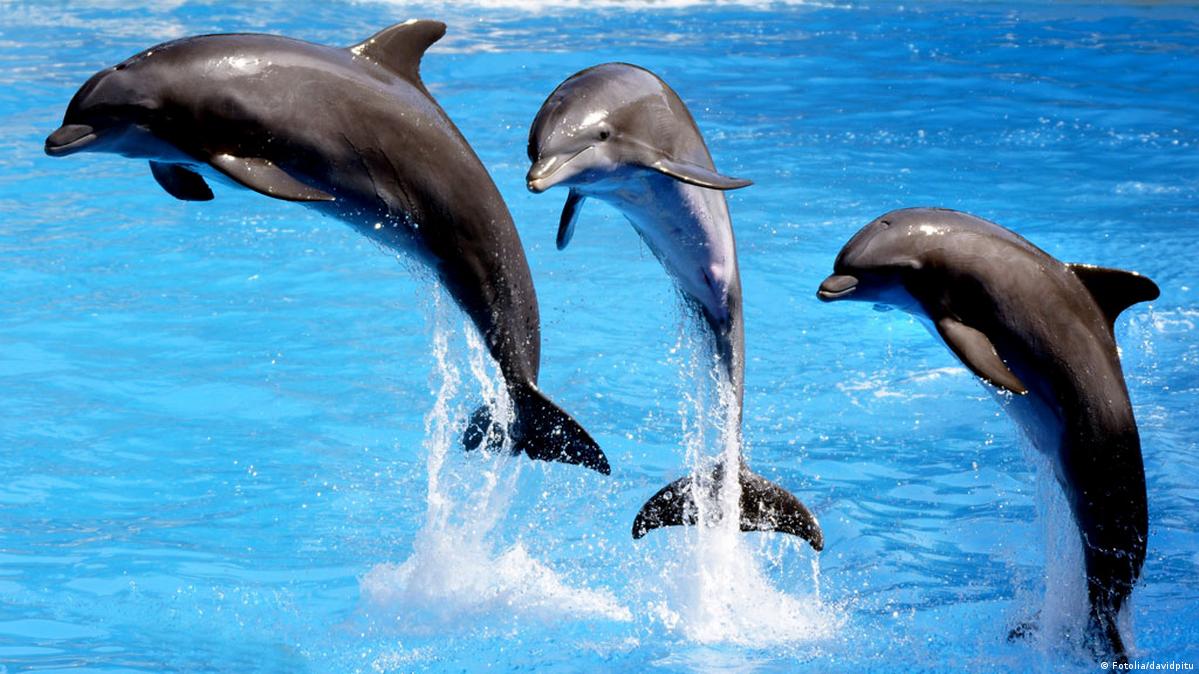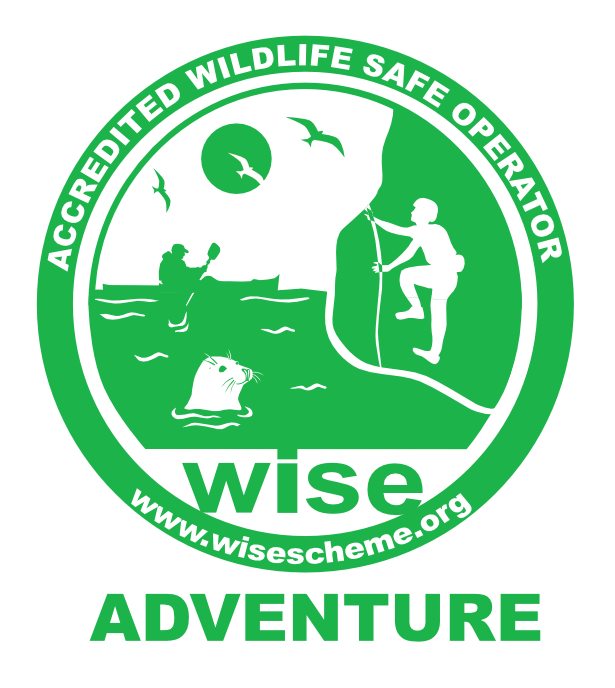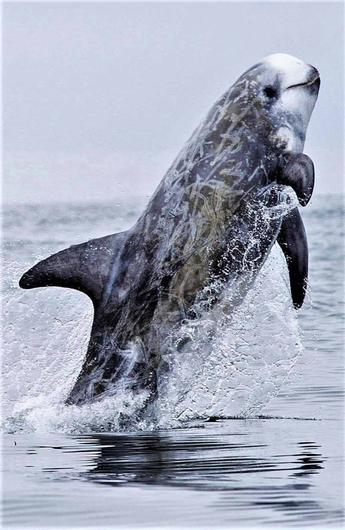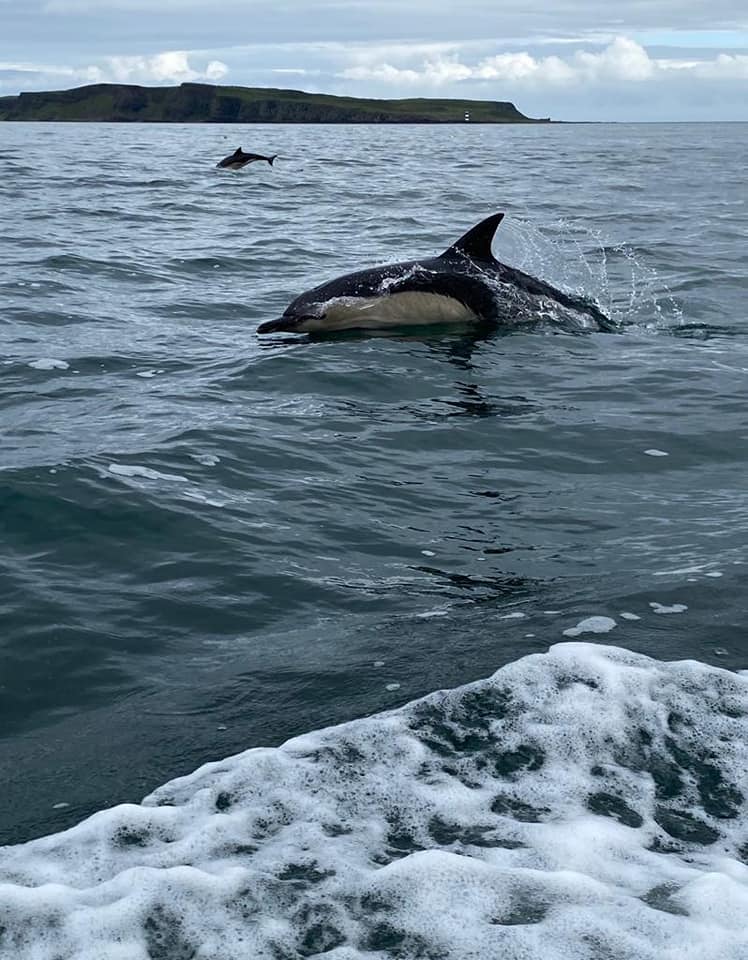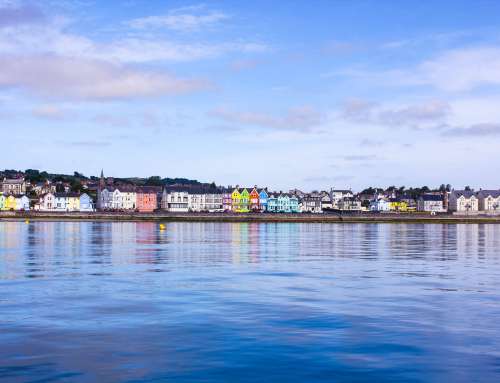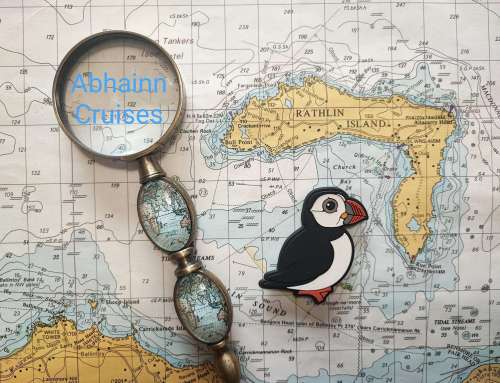Like many people, we love dolphins at Abhainn Cruises. Our Skippers and crew often encounter dolphins on our North Coast Sea Safaris. The Causeway Coast and Sound of Rathlin Island are very popular fishing areas and playgrounds for many dolphins, especially during spring and summer. It is always a delight to see them and thrilling when they decide to follow and play in the wake of our powerboats. They often jump the wake and touch their bodies against the soft inflatable sides of our boats. These encounters are always exciting, especially for our onboard guests. It makes an already fun tour a very uplifting and memorable experience.
As is the case with all wildlife encounters it is absolutely vital that we do not cause distress or disturbance to these wonderful creatures. This is why both our skippers have completed Wildlife Safe Accreditations with the UK recognised WiSe Scheme which seeks to educate and spread awareness of wildlife safety and train boat tour operators and activity providers who work in the water. Our skippers are fully trained and compliant with the guidelines set out by the WiSe Scheme and with the law regarding wildlife encounters. So our onboard guests can rest assured that we do everything we can to protect dolphins as we visit in their natural habitat.
Dolphins are found all over the world in a variety of aquatic environments.
The species we most often see on our sea safaris are: Common Dolphin, Bottle Nose Dolphin, Risso’s Dolphin and Harbour Porpoise
Some dolphin facts:
Dolphins evolved from land mammals whose legs were underneath their bodies. As a result, dolphins tails move up and down as they swim.
Dolphins are mammals and need to regularly visit the surface to breathe air to survive, otherwise they would drown.
Dolphins are warm-blooded and have blubber to keep them warm.
The Amazon River is home to 4 species of dolphin that are found nowhere else on earth.
The biggest member of the dolphin family is the orca (killer whale).
Dolphins like to blow bubbles to herd their prey to the surface.
Dolphins are very communicative. They make a variety of sounds including whistles, clicks, squawks, squeaks, moans, barks, groans and yelps.
A group of dolphins is called a pod. Dolphins are social mammals that interact with one another, swim together, protect each other, and hunt for food as a team. Most pods contain 2 – 30 dolphins depending on the species and the situation, however there are occasions when pods gather with other pods to form superpods of 100 or even a few thousand dolphins!
Dolphins are highly intelligent. They have been documented using tools and bottle nose dolphins are one of the few species, along with humans and apes, that have exhibited the ability to recognise themselves in a mirror.
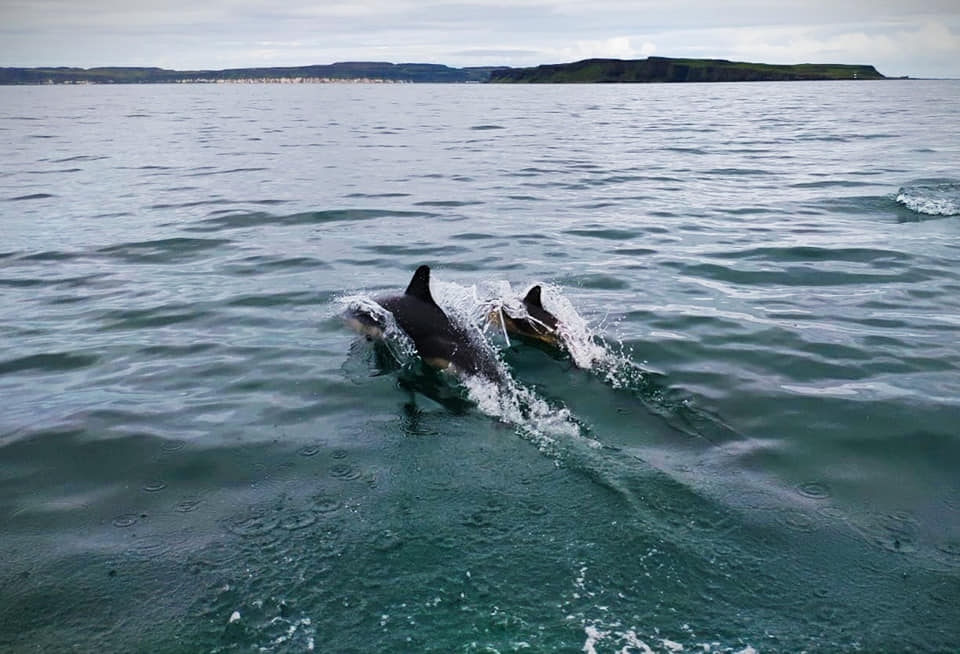
How To See Dolphins
The best way to see dolphins is to get out onto the water on a sea safari. The longer you are out the more likely you are to encounter dolphins. After that it’s just a matter of luck, being out on the water at the right time. We can’t guarantee seeing dolphins on any one sea safari and we certainly won’t chase them, but if we do come across any we can alter your tour slightly to give you the chance to enjoy them. They usually spend some time playing in our wake before they leave to go fishing. At this point we respect their space and watch from afar. Sometimes our onboard guests are lucky enough to get photos or video, but mostly it’s just more enriching to be present and enjoy the experience.
Here are links to some of our sea safaris where dolphins have been encountered:
Around the Sound Rathlin Experience
To get more information or to book your Sea Safari contact Lynn on +44(0)7845 370231 – Call, text or WhatsApp



